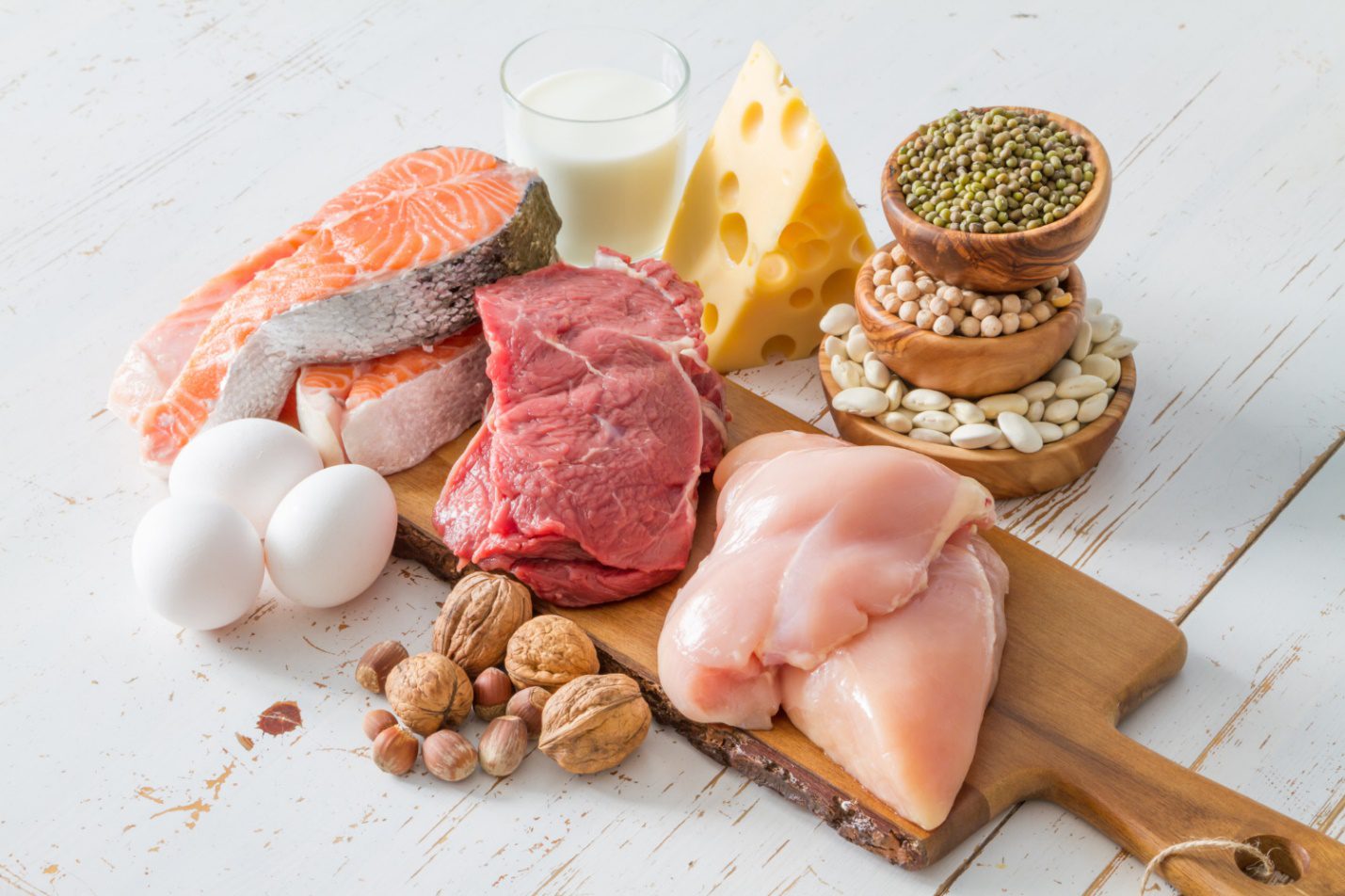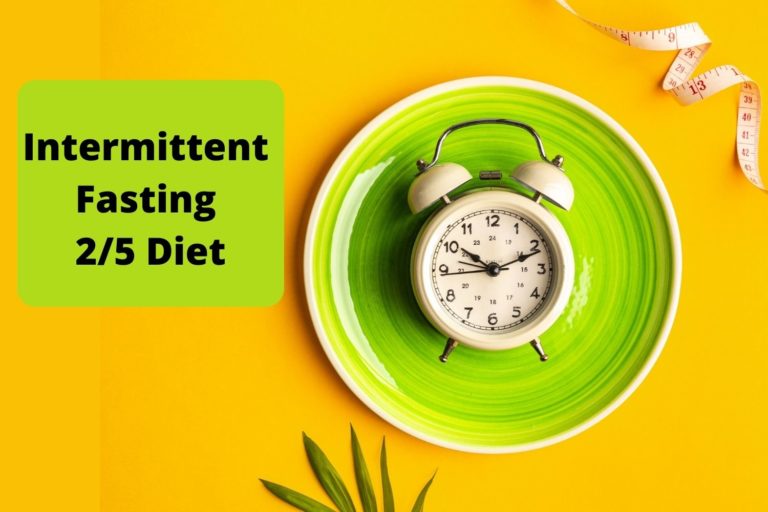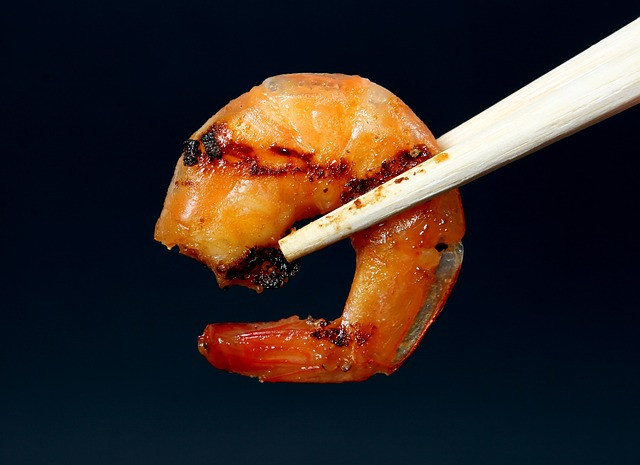Introduction to Intermittent Fasting 2/5 Diet
Did you know that through the 5:2 diet, you can reduce your total body calories by approximately 20%? (1). In simple terms, intermittent fasting is an eating schedule that incorporates regular fasting. Currently, the 5:2 diet plan or the fast diet is one of the most famous diets. The 2 and 5 represent the fasting and non-fasting days, respectively. The diet recommends caloric restriction intake to 500 calories for women. For men, it should be 600 calories for the two fasting days. During the five non-fasting days, you can eat your everyday meals. But it would be best if you did not overdo it by eating many unhealthy foods. Eating typical foods incorporates consuming reasonable calorie amounts that your body requires. Eating normally also includes eating moderate portions of a variety of nutrient-dense foods.

Overindulgence during the non-fasting days may lead to the excess accumulation of calories. In that case, your body might have challenges shifting its fuel source from carbs to fats.
Is fasting for two days ideal for achieving a weight loss goal?
For some people, the 5:2 diet works, while for others, it doesn’t. Also, to others, the diet may go the extent of causing adverse effects. During the five non-fasting days, the diet allows you to stick to your regular daily diet. Therefore, it means that there is no specific restriction to what you should or should not eat.
In that case, intermittent fasting for two days might last for extended periods. You may not be decreasing your carbohydrate intake to warrant losing excess weight. If you want to achieve your weight-loss goal within shorter periods of time, I would not recommend the use of the 5:2 method.
Why is that? To attain your weight loss goal, you need to get into full ketosis. Also, to get into complete ketosis, you must significantly reduce your carbohydrate intake. Adding healthy fats into the low-carbohydrate diet magnifies the weight loss results.
I find that the 5:2 schedule is more of a temporary basis for fasting. The reason is that lowering your calories per day or two on the 5:2 program does not put you fully on ketosis. Instead, it would help to reduce your carbohydrate intake to put your body system on full ketosis. The idea of ketosis is to make your body adapt to fat burning.
Therefore, intermittent fasting 5:2 diet may not adjust your body to fat burning. The primary reason is that you may still be eating whatever you want during the five non-fasting days. Diets for weight loss may need you to do more than just lowering your calorie intake. Suppose your body doesn’t adjust to burning fat as a fuel source while on a 5:2 diet. In that case, you might experience hunger. Other effects are irritation or stress on the thyroid gland.

Intermittent fasting can help you in serious reductions in body weight and is best for weight watchers. People who are stuck with restriction on weight loss can get maximum benefit and get normal weight. Human Studies and even animal studies have proven the results of intermittent fasting in weight loss.
Foods to include during the fasting days
However, for some people, the 5:2 program still works well. During the fasting days, your body still needs a supply of nutrients and daily calories. These nutrients and calories facilitate its daily functions. Therefore, you may need to eat nutrient-dense healthy food like proteins and vegetables. Fruits and healthy fats also fall in this category. I prefer vegetables. Eating considerable amounts of them improves my feeling of satiety. Also, vegetables have a low-calorie value than most grains and animal products. Vegetables and fruits also have high fibers. They also have adequate vitamins and minerals. (2).
Leafy greens vegetables
Examples of leafy and green vegetables include spinach, kales, and microgreens. Others are collard greens, beet greens, cabbages, and romaine lettuce. Consuming lots of these vegetables has many advantages. They add bulkiness to your meal. So, they may help you feel fuller; thus, you may not get the urge to eat extra calories. Also, salads are extra nutritious and improve your satiety feelings too.

I don’t eat spinach on a personal account, so I usually replace them with the rest of the veggies on fasting period. My body doesn’t feel comfortable whenever I eat spinach. But that’s my preference, and it doesn’t mean that you shouldn’t eat them too. If your body responds well to spinach, you have no reason not to eat them. Identify which vegetables are ideal for your body. Then incorporate them in your fasting day’s diet.
Fruits
When fasting two days a week, it is also essential to incorporate fruits in your fast days’ meal pattern. Most fruits are sweet with high concentrations of natural sugars. But, dark berries have low sugar levels. Examples of dark berries include blueberries and blackberries. So, if you consume blueberries or blackberries, you may meet your sweet craving needs. You may also feel fuller. These fruits will also help you maintain a low-calorie intake.
Saturated fats
Consuming high-quality organic healthy fats is good for your overall health benefits. Caprylic acid, lauric acid, palmitic acid, and butyric acid are healthy types of saturated fats. So, which foods are rich in these nutrients? Don’t worry. I am about to explain some of the primary sources of these essential saturated fats.
You can get Caprylic acid from foods like coconut oil, dairy products, breast milk, and nuts. When you are on intermittent fasting two days a week, your body needs to be highly immune. Caprylic acid is fantastic for boosting your immunity. It is also an excellent anti-viral agent.
Lauric acid has two primary food sources: breast milk and coconut oil. Lauric acid is also anti-viral and great for boosting your immune system.
Unfortunately, most people tend to believe that palmitic acid is bad for the body. Did you know that palmitic acid is the primary structural component of your body cells? Well, if you didn’t know, now you know. You can find plenty of this acid in nuts, fish, animal products, and seeds. Approximately 50% of your cell membrane uses palmitic acid for metabolic functions.
Lastly, butyric acid is an essential saturated fat that feeds your colon cells. To avoid adverse effects like celiac, leaky gut, or digestive problems, consume reasonable amounts of butyric acid. The primary food source of butyric acid is butter. Also, your microbes can naturally manufacture it from the fiber in the salad you consume.
Note that these fats can only cause adverse effects when you consume them alongside excess sugars and starches.
Fatty Proteins
Your normal weight loss goal may be achievable if you choose to eat proteins. Proteins will make you feel full throughout the day without having to add extra calories. Remember that it is healthier if you choose to eat fatty proteins. I prefer fatty meat and chicken breasts. It improves my satiety. Additionally, it incorporates reasonable fat amounts. Note: extremely lean meat can cause protein starvation or fat starvation conditions.
So, eat reasonable portions of fatty proteins like;
- Fatty meat
- Eggs
- White fish
- Tofu
Foods to avoid on intermittent fasting 2/5 diet plan
It will help if you reduce your caloric intake by avoiding calorie-rich foods. There would be no point in fasting while you are consuming a calorie-rich meal per day. The idea is to reduce caloric intake as much as possible. Thus, for good metabolic health, you need to avoid the following food intake;
Processed foods
Processed foods have a direct impact on your metabolic health. It means that they incorporate high levels of calories, fats, and sugars. So, due to these high levels, they may not improve your metabolic health.
Remember, your metabolic health depends on several factors. They include having ideal blood sugar, high-density lipoprotein cholesterol, triglycerides, and insulin levels. (3). Having a perfect waist circumference and blood pressure also defines your metabolic health. If you expose your body to high sugar, fat, and high levels of insulin, you may be more susceptible to adverse effects. You may become susceptible to chronic diseases like diabetes, heart diseases, and stroke.
Refined Carbohydrates
Refined carbohydrates include pasta, white rice, bread, and cakes. When refining carbohydrates, most manufacturers strip off minerals, vitamins, and fiber. So they are empty calories. In that case, refined carbohydrates’ daily intake triggers a high glycemic index.
These adverse effects may cause a rapid increase in blood sugar levels. As the blood sugar levels increase, insulin levels also increase rapidly. This happens after every meal.
If possible, avoid daily intake of refined carbohydrates. If you can’t stay away from refined carbohydrates, how many days per week should you eat them? I would recommend you eat a small piece once a week.
Point to remember. Elevated blood sugar and insulin levels may cause adverse effects and chronic diseases. These chronic diseases include diabetes and cardiovascular disease, so it’s a wise decision to keep it as low as possible to avoid getting any chronic disease that is related to high blood sugar and insulin resistance.
Excess glucose intake stimulates higher bad LDL
Did you know that your body is more likely to create bad LDL due to excessive sugar consumption? If you are on intermittent fasting, you don’t need to worry about your body generating high LDL levels. If you maintain a low intake of sugars, your body will reduce insulin resistance. Integrating a healthy ketogenic diet with intermittent fasting heals your insulin resistance. Also, avoiding excess glucose intake lowers your cholesterol levels significantly.
High caloric intake in the form of glucose metabolism puts you at the risk of developing adverse effects. The effects may include the accumulation of bad LDL. Bad LDL cholesterol levels may affect your metabolic health. (4). Also, high bad LDL cholesterol levels in the body may cause adverse effects. These levels may also lead to chronic diseases like stroke and cardiovascular disease.
Lean Protein
When on intermittent fasting, your body still requires essential nutrients. They help in maintaining metabolic health. Fat is essential in our daily metabolic activities. In as much as you should eat reasonable protein amounts, consuming them lean is not advisable. Lean protein like rabbit and chicken breasts contain very minimal amounts of fat. My opinion is that if rabbit meat is the only meal available, restrain from eating it.

When consuming proteins during intermittent fasting, consume them as a whole meal. Avoid removing the fat. For instance, avoid removing the skin of a chicken breast and sardine. Consuming extremely lean protein creates mineral and vitamin deficiencies.
Importance of Fasting 2 days a week on a ketogenic diet
You may also want to lose weight faster. The best way to lose weight faster is by integrating intermittent fasting two days a week with keto. Integrating the two programs help to reduce glucose and insulin levels significantly. Also, various other unlimited access of benefits come with combining intermittent fasting with keto. They include;
- Regulated blood sugars
- Normal weight reduction in obese adults
- Development of a better mood and energy levels
- Improvement of cognitive functions like focus, concentration, and memory.
- It reduces inflammation.
- It reduces your cravings significantly.
- It fixes or reduces the risk of metabolic syndrome, Risk of obesity, or risk of diabetes
When it comes to reducing insulin levels, intermittent fasting and keto only get rid of the excess. Remember your body still needs insulin for metabolic health. So you cannot reduce insulin levels to zero. Surprisingly, most people have high insulin levels. What is more surprising is that in most cases, healthcare professionals do not test for insulin levels. Instead, they test for blood glucose levels. By eating less frequently and fasting for two days helps lower your insulin levels.
During the two fasting days, avoid eating sugary foods. These foods may trigger higher insulin levels. These foods will only bring you back to the drawing board. Eating less frequently on a ketogenic diet reduces your body’s nutrients requirements. This phenomenon happens since your body starts being conservative with the available nutrients. Thus, it holds and retains them for future use. Also, integrating intermittent fasting with keto aid in the dramatic increase of growth hormones. This dramatic increase in growth hormones protects the body from losing muscle mass. So you may not have to worry about losing muscle mass.
Conclusion
It is important to note that there is no one-size-fits-all method in nutrition and diet. The intermittent fasting 5:2 approach works well for some people. Yet, it may still be a challenge to others. The main reason is that their bodies need more than 500 calories during the two fasting days.
Due to the low-calorie intake, it might be helpful to be careful with exercise. Your body might not have adequate calories to fuel the workouts. Additionally, some situations may not allow you to use this approach. If you have an active eating disorder, hypoglycemia, or diabetes, it would be best not to try the 5:2 approach. Additionally, if you are a nursing woman, pregnant woman, or attempting to conceive, this is not the diet plan for you.







